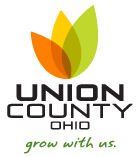History of The Union County SWCD
The Ohio Soil Conservation District Enabling Act was established on May 16, 1941, House Bill 646 was passed by the 94th General Assembly, and signed by Governor John W. Bricker on June 5, 1941. This act created the Ohio Soil Conservation Committee (OSCC) as an agency of the State of Ohio with offices at The Ohio State University. The Act also established procedures for the formation of local Soil Conservation Districts, and the election of local District Boards of Supervisors in addition to defining the authorities and responsibilities of these local district Boards and OSCC.
Procedures for forming a local Soil Conservation District required that a petition requesting a hearing to contain signatures of at least 75 landowners within the proposed District be submitted to OSCC. The OSCC would then conduct a public hearing concerning the possible formation of the District.
The Union Soil and Water Conservation District (originally known as Union Soil Conservation District) was created by local people under the State Enabling Act in 1945. It operates under Ohio Revised Code 940 as a legal subdivision of the State of Ohio.
At the first meeting of the Union Soil Conservation District, held on September 24, 1945, the following Supervisors were elected: Chris Boerger: Chairman; Shade Watkins: Secretary; Ralph Herd: Treasurer; Mel Kennedy: Member and Watt Treese: Member. The SCD Supervisors signed a Memorandum of Understanding with the U.S. Soil Conservation Service (now known as USDA-Natural Resources Conservation Service) requesting technical assistance.
In February 1946, Charles Phillips was assigned as the first District Conservationist for the Union SCD. The SCS/SCD office was established in the basement of the Marysville Post Office, next door to D.B. Robinson, County Agent, and Bob Peoples, Farmers Home Supervisor. Also among cooperating agencies was Wilby Cochenour of the Agricultural Stabilization and Conservation Service (now known as the USDA-Farm Service Agency).
The primary concern of the Union SCD in the early days was “To put every acre to its best use and treat it according to its needs”. To accomplish this, it was decided to educate as many landowners as possible about the services available through the Union SCD by SCS.
The Union District Supervisors selected group leaders and asked them to help inform their neighbors of the conservation needs of their communities. The groups would meet and invite the District Conservationist to explain the Soil Survey Maps of their farms and show 35mm color slides of the conservation practices needed to solve these problems.
At the last group meeting, the group leaders Conservation Plan would be explained to the group and appointments would be made for the District Conservationist to go over each member’s farm to help him develop a Conservation Plan.
At that time, most farms in Union SCD were small dairy farms. Most of these farms had erosion and fertility problems. Many were not getting the full benefit from fertilizer applied because of low pH. About twice as much limestone was needed to raise the pH enough to make more effective use of the fertilizer applied.
ASCS conservation cost-sharing funds were utilized for applying the limestone. This was probably the greatest conservation need at that time. However, there were not enough funds available to meet the total needs. When a farmer was advised of his total limestone needs the common reply was “This is all the limestone that I’m allowed”. The District Supervisors and SCS would advise such farmers to borrow money, if necessary, to meet the total needs.
In the Conservation Planning process, crop rotations, ponds, waterways, diversions, open ditches, tile systems, and terraces were designed to fit the cooperator’s needs. Many needed more and better quality forage and accomplished that by replacing one year of Red Clover-Timothy with two or more years of Alfalfa-Bromegrass. Kentucky 31 fescue, new and almost unknown then, became the standard for the protection of ponds, waterways, diversion, and open ditches.
The Union Soil and Water Conservation District, with the help of cooperating agencies, continues to assist landowners and operators today to fulfill the original goal of putting every acre to its best use and treating every acre according to its needs.
Footnote: Information for this article was gathered from the “How It Was – 50 Years Ago” article, 3/94, Charles Phillips and the SWCD Administrative Handbook “Ohio Soil and Water Conservation Partnership” section; and Union SWCD historic records.
The Union Soil and Water Conservation District and the United States Department of Agriculture (USDA) prohibit discrimination in their programs based on race, color, national origin, sex, religion, age, disability, political beliefs, and marital or familial status.
